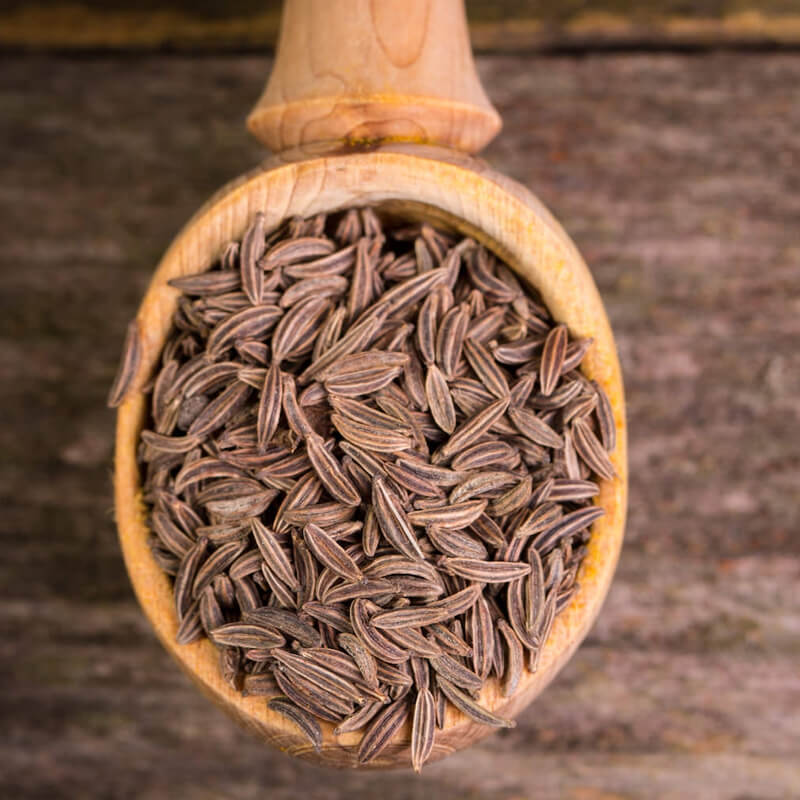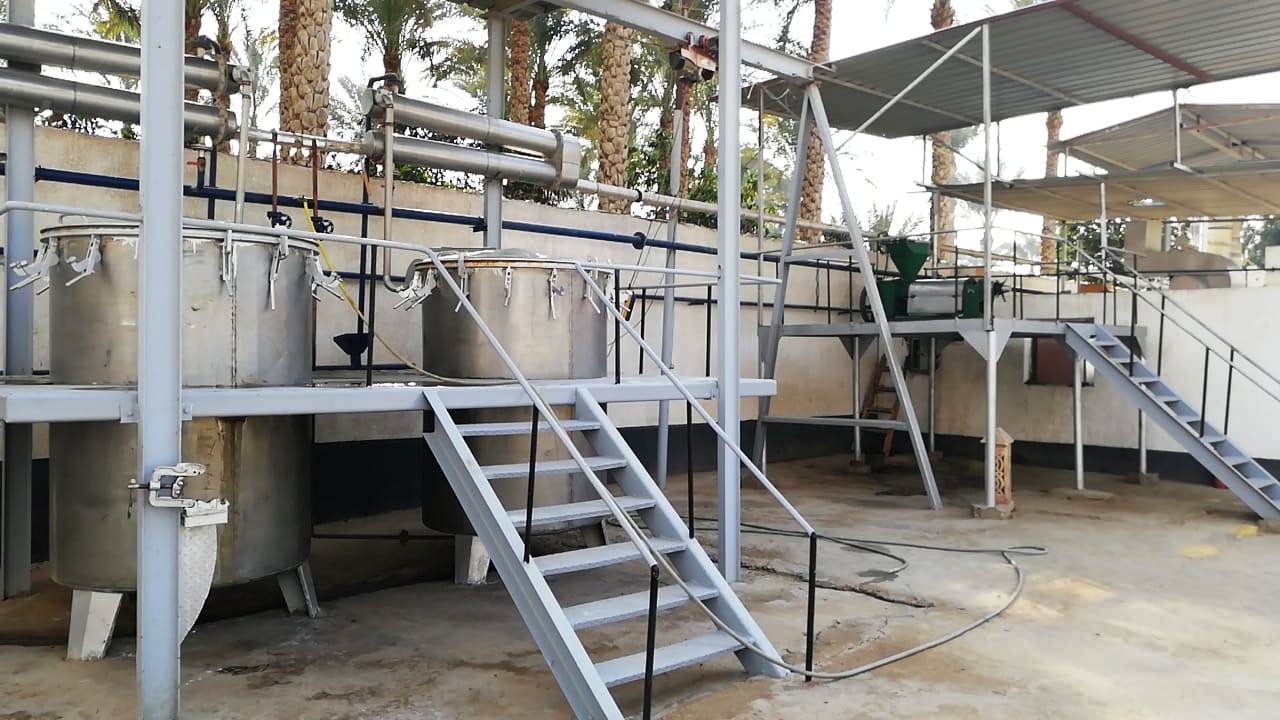Cumin Seeds Cuminum cyminum Essential Oil
Login to view prices
Latin name: Cuminum cyminum L.
Family: Apiaceae (Umbelliferae)
Other Names: Engl.: cumin, green cumin, jeera, white cumin. Deu.: Kreuzkümmel, Mutterkümmel, Römischer Kümmel, Weisser Kreuzkümmel. Suom.: roomankumina, juustokumina, maitokumina. Sven.: spiskummin, romersk kummin, vit kummin. Fran.: cumin. Span.: comino. Bot. syn.: Cuminum odorum Salisb Cumin, Cuminum cyminum L., also known as Cuminum odorum Salisb
Description:
Cuminum cyminum L. is a slender, rather pretty annual growing to a height of 1 ft. or less and bearing very finely divided leaves. The aromatic, dried ripe fruits (seeds) are of elongated, oval shape, about 5 to 6 mm long, and light brown in color.
Botanical Origin:
Common name: Cumin
Latin name: Cuminum cyminum L.
Family: Apiaceae (Umbelliferae)
Other Names: Engl.: cumin, green cumin, jeera, white cumin. Deu.: Kreuzkümmel, Mutterkümmel, Römischer Kümmel, Weisser Kreuzkümmel. Suom.: roomankumina, juustokumina, maitokumina. Sven.: spiskummin, romersk kummin, vit kummin. Fran.: cumin. Span.: comino. Bot. syn.: Cuminum odorum Salisb Cumin, Cuminum cyminum L., also known as Cuminum odorum Salisb
Description:
Cuminum cyminum L. is a slender, rather pretty annual growing to a height of 1 ft. or less and bearing very finely divided leaves. The aromatic, dried ripe fruits (seeds) are of elongated, oval shape, about 5 to 6 mm long, and light brown in color.
Range & Habitat:
Probably a native to Turkestan or Upper Egypt, cumin has been grown in Mediterranean countries for so long that its origin is difficult to trace.
Primary cultivation of cumin is in Europe, Asia, the Middle East, and North Africa with India and Iran as the largest cumin exporters
Planting & Cultivation:
Cumin plant thrives best on a well-drained, rich, sandy loam in regions where temperatures are mild and equable during the growing season of three or four months. The crop can be grown from seed. In the Middle East, cumin is grown as a winter crop, sown and harvested between April and May. Plant the seeds in a sunny location after the soil has become warm in spring. If the rows are 2 feet apart, with 16 to 20 seeds to the foot, no thinning will be necessary.
The reported life zone of cumin is 9 to 26 ºC with an annual precipitation of 0.3 to 2.7 meters and a soil pH of 4.5 to 8.3.
Complete control of weeds is necessary, because the plant small and tender. For that reason, planting of the seed in rows spaced to permit a maximum use of cultivators would seem preferable in regions where hand labor is costly.
Harvesting and Preparing for the Market:
The crop is ready for harvest when the plants wither and the seed loses its dark green color. In the Mediterranean region the plant are cut by hand, since the small tender plants are difficult to harvest mechanically, allowed to dry, and the seed beaten out with sticks, after which it is further dried and then cleaned of earth and other extraneous matter.
Yield of seed per Acre:
Yield of cumin seed is reported to range from 100 to 1000 lb per acre, with 500 lb a fair average production under reasonably good conditions.
Method of Extraction:
By Steam Distillation.
The dried fruit is crushed and, immediately after crushing, distilled with steam. Distillation lasts about 12 hr. it is advisable to redistill (cohobate) the distillation water.
Yield of oil:
Yields of oil vary from 2.4 to 3.6%. The yield depends greatly upon the age of the seed, the older seed containing less oil.
Notes:
- Do not use on any part of the body because of phototoxic effects.
- The % of total aldehydes (cuminaldehyde, p-mentha-1, 3-dien-7-al, p-mentha-1, 4-dien-7-al) should be from 49 – 54 % of the total oil.
- The higher the g-terpinene the lower is the quality of the oil.
- Cumin as most seeds is steam distilled for 12 hrs:
- The yield of the first 4 hrs is characterized by high total aldehydes that may exceed 56 – 57%.
- The yield of the next 4 hrs is the most common (i.e. we take the product of 8 hrs distillation which recover about 85 % of the total oil in cumin seeds) and is characterized by the above limits.
- The product of the last 4 hrs recovers only about 15% of the total oil in the seeds and of the worst quality. Low levels of cuminaldehyde, high levels of p-mentha-1, 3-dien-7-al, and p-mentha-1, 4-dien-7-al, and very high levels of g-terpinene characterize it.
Adulteration & its Detection:
The oil is subject to much adulteration, especially with:
| Adulterant | Appropriate method for detection | Notes |
| Synthetic cuminaldehyde |
[1] Source: Simon, J.E., A.F. Chadwick and L.E. Craker. 1984. Herbs: An Indexed Bibliography. 1971-1980. The Scientific Literatureon Selected Herbs, and Aromatic and Medicinal Plants of the TemperateZone. Archon Books, 770 pp., Hamden, CT. The Essential Oils. By Ernest Guenther. 1950
Phases of manufacturing the Cumin Oil:
Preparation of the Herbs:
- The seeds are collected from our farms or from other authorized farms we supervise
- The seeds are screened & the best are selected.
- The moisture level of the seeds is reduced to the optimum by a drying process.
Steam distillation Phase:
- The seeds are put in steam distiller.
- The oil gets collected into the Collection tank.
- The Oil is transferred to Drums from the collection tank and allowed to settle.
Filtration phase:
- The settled oil is then transferred to separate Drums and the oil is filtered mechanically passing through a Filter Press.
- The filtered Oil is collected into Iron Drums and Stored in air-tight condition
Export Markets:
We export our oils to many countries all over the world. USA, France, Germany, China, Malaysia, Algeria, Morocco, Indonesia…etc
Quotation:
- Incoterms: FOB Cairo Egypt
- Quantity: More than 200 L Minimum
- Specification: 100% natural and Pure quality
- Documentation: COA, MSDS, TDS, GC Peaks
- Packaging: Bulk in 180,60,25 liters Packs or retail packaging upon request
- Payment terms: TT in advance to Our bank account
- Lead time: Shipping through 10 days from receipt of the payment.
- Sea Shipping Time: 35 days
- Air shipping time: 10 days
Quality Certificates:
- ISO 9001-2015
- ISO 22000-2005
- GMP accredited by AQC Middle East FZE
- KOSHER Certificate
- Halal Certificate
- ORGANIC Certificate accredited by CERES GmbH Germany
- NOP Certificate accredited by CERES GmbH Germany
- Egyptian Ministry of Health Permission
Contact us please to receive other supporting documents for our Geranium Oil :
- COA
- MSDS
- TDS
- GC Peaks
Branding Services
We also can do customized packaging for you to bottle whatever size you like. We can help in designing labels, selecting good bottles, and packaging. We deliver integrated solutions under your brand..
Organically Certified Oil Available upon request
Additional information
| Weight | N/A |
|---|---|
| Dimensions | N/A |
| Oil Purity | 100% Natural & Pure without any chemical, flavor, food additive or carrier. |
| Ship from | Egypt |
| Country of Origin | Egypt |
| Cultivation Type | Organic Certified, Organic not Certified, Conventional |
| Oil Bulk Packaging | 180 kg Steel Drum, 25 kg HDPE Plastic Jerrycan, 50 kg HDPE Plastic drum |
| HS Code | 33012945 |
| CAS Number | 8014-13-9 |
| Oil Documentation Available | Allergen Free Certificate, Bovine Spongiform Encephalophathy (BSE) Certificate, Certificate of Analysis (COA), GMO Certificate, GRAS Status Statement, Halal Certificate, Herbal Origin Statement, KOSHER Certificate, Manufacturing Flow Chart, Material Safety Data Sheet (MSDS), Organic Certificate, Pesticide Residual Certificate, Researches & Studies, Technical Data Sheet (TDS), WADA Prohibited list Statement |
-
Login to view prices
-
Login to view prices
Jasmine Infused Oil (Natural Jasmine oil or flowers infused in Carrier Oil)
Login to view prices Read more -
Login to view prices
-
Login to view prices
-
Login to view prices









